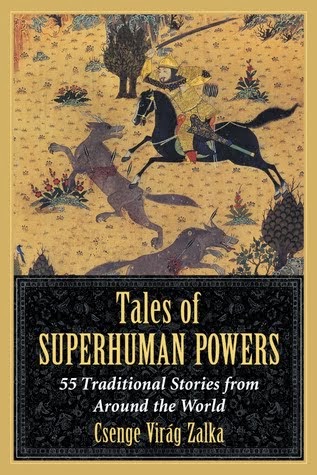Or three.
Tale of Tales (Il racconto dei racconti) is an Italian-French-British film based on stories from Giambattista Basile's 1634 fairy tale collection, the Pentamerone. It is categorized as "fantasy-horror" - which is pretty much the same as saying "fairy tale adaptation."
The movie re-tells and intertwines three stories from the collection:
The Flea (one of my favorites)
The Enchanted Doe (a version of "the golden-haired twins")
The Old Woman Discovered (which was new for me although I do know the story type)
I have a personal connection to the Pentamerone: When I first started working as a storyteller, these fairy tales were a huge part of my repertoire (since I performed with a Renaissance group). Ever since I first saw the trailer, I have been waiting with excitement to see the film:
I was not disappointed.
First off, in good European film fashion, this movie pulls no punches. There is no fake prudishness, no sugarcoating, and while everything you see on seen is gorgeous, nothing is ever "pretty" or neat. The film has the surreal, unreal, startling beauty of fairy tales; it visually represents the elaborate, flowery language of Basile's stories, while revealing the darkness that operates their plot.
And there is definitely darkness. I knew all three stories before I saw the movie; I knew what was supposed to happen, but I kept wondering if they would actually go there.
They did, and then some.
(Mild spoiler-ish things ahead)
(Mild spoiler-ish things ahead)
I was surprised at how strong the emotional reactions were that this film got out of me at every turn. I was literally biting my nails (or rather, my fist). They took the fairy tale stories, and added the raw emotions to every character - what would a princess feel when she is given away to a stranger as a wife? What would a queen behave like when she gets a child after years of longing? What would a woman feel when her sister leaves her behind? The emotional roller-coaster takes us through all that and more, from horrible fight to tearful relief to bitter pity. The whole thing is wonderfully constructed, exciting - and emotionally exhausting in a good way.
The acting is stellar. Bebe Cave, in the role of The Flea's Princess Violet, deserves an array of awards for her work. She had moments that I had to replay multiple times. Shirley Henderson (whom I didn't even recognize until I looked at the credits) brings a heartbreaking performance. Salma Hayek is a perfect queen, and Toby Jones is everything a slightly crazy fairy tale king needs to be.
Even more important than this: The creators understood fairy tales. They knew that they have not endured for hundreds of years because of the dresses, sunshine, and cuteness (*cough*LiveActionCinderella*cough*). They were not afraid to go into the emotions behind the symbols, while still keeping the magic intact. And as they did, they managed to open up new ways of understanding these stories - they turned envy to longing, desire to greed, desperation to power (you'll get it when you see it). The movie is an exercise in doing the "what if" kind of fairy-tale re-tellings with grace, empathy, and subtlety.
This movie is probably the best fairy tale adaptation I have seen in a very long time.
















